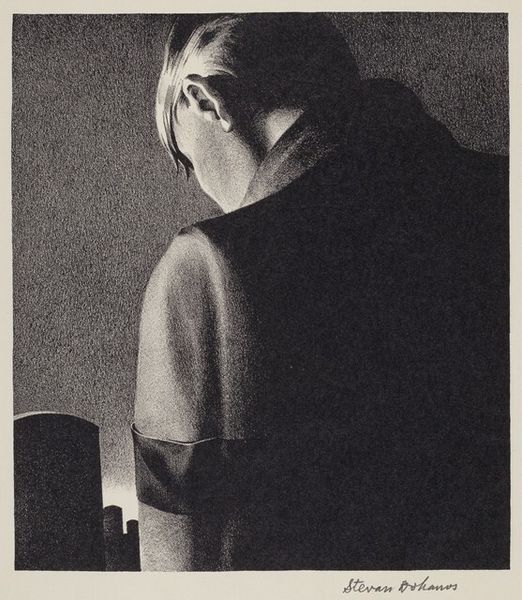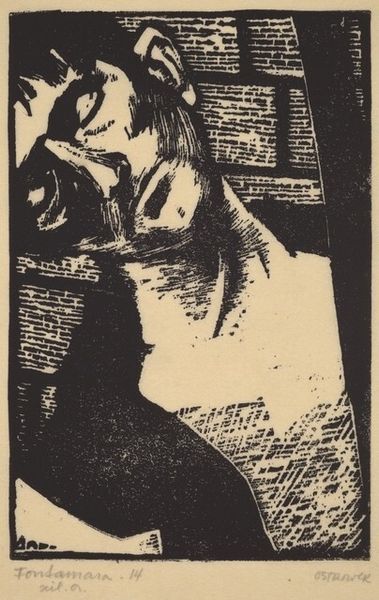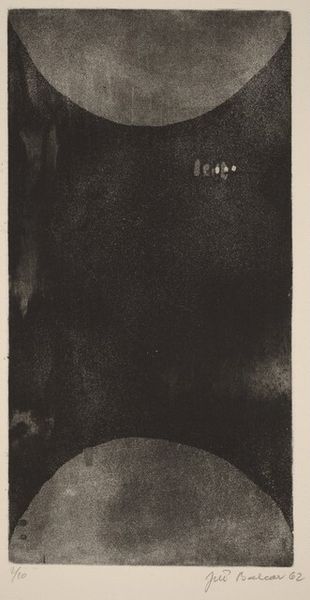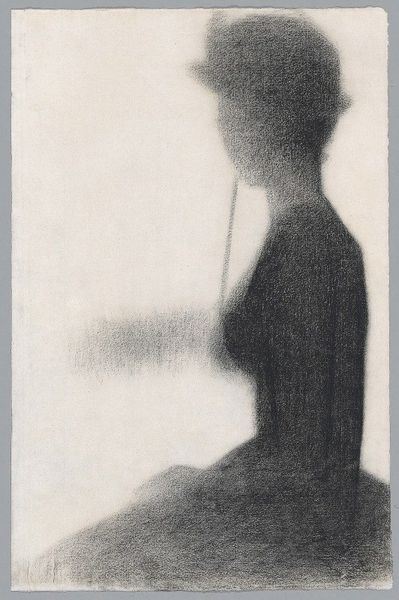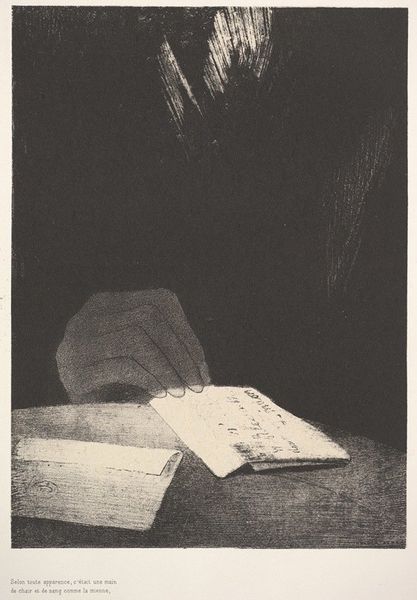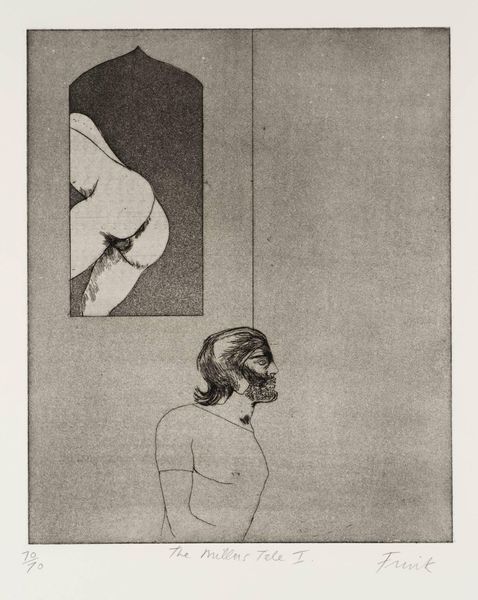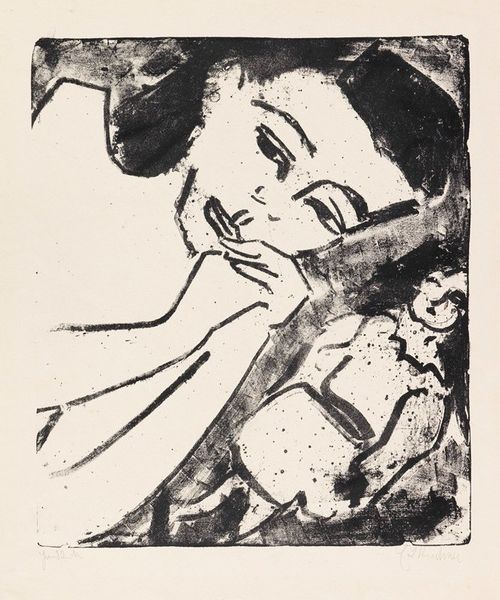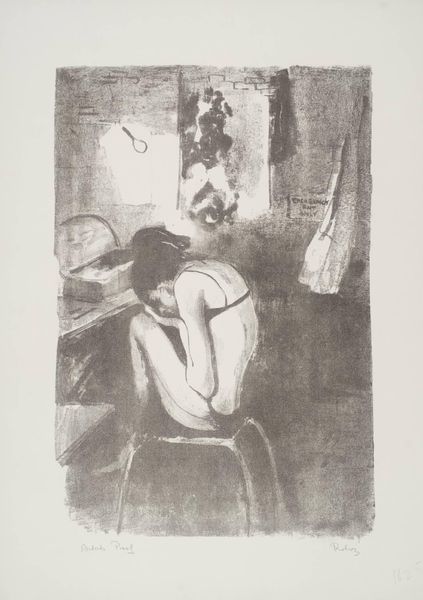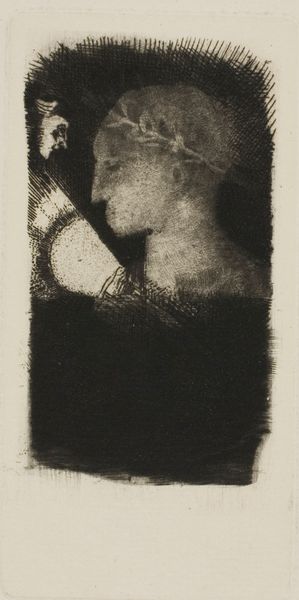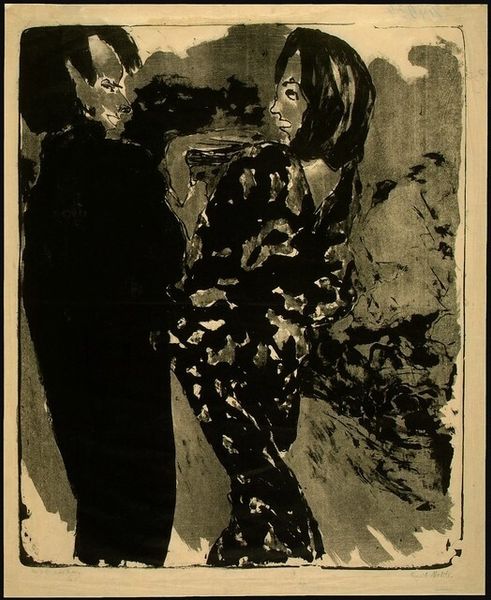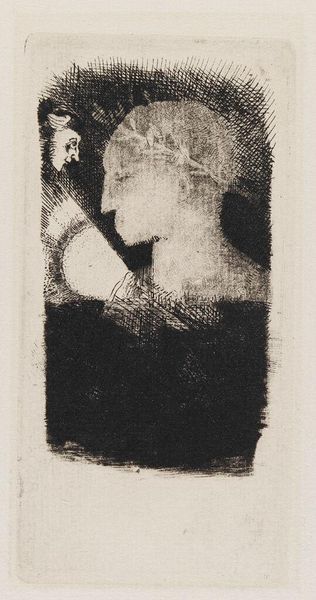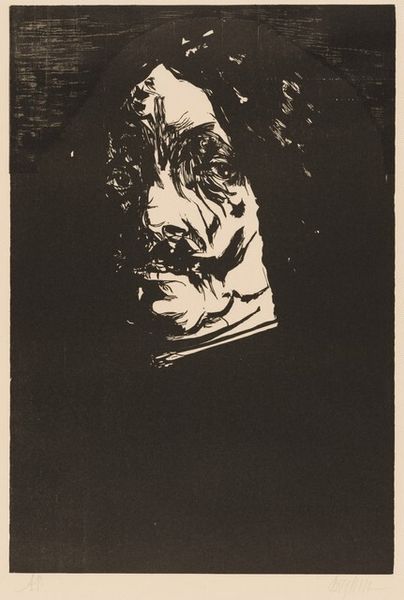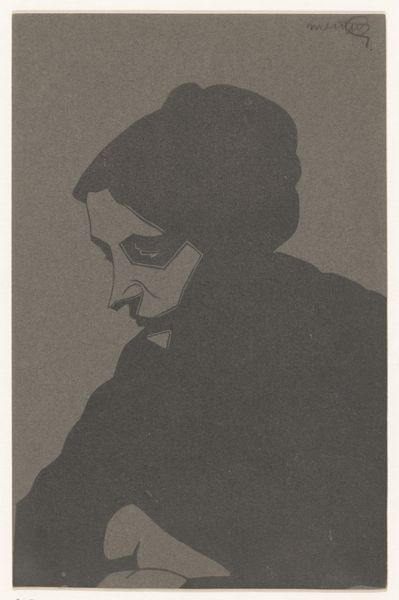
photography
#
wedding photograph
#
photo restoration
#
black and white format
#
b w
#
photography
#
black and white theme
#
portrait reference
#
strong emotion
#
black colour
#
black and white
#
limited contrast and shading
Copyright: Public domain
Curator: What strikes me immediately about this photographic "Study" is its intimacy. The figure is almost swallowed by the dark, her face obscured by her own hand. It's evocative of a very specific, internal struggle. Editor: Yes, the darkness is profound. And grainy. I wonder about the darkroom practices. The development seems deliberately imperfect, avoiding the sharp clarity one might expect in portraiture. What can you tell me about the materials and the artist, Robert Demachy? Curator: Demachy was a leading figure in the Photo-Secession movement. His work often employed techniques meant to mimic painting—gum bichromate, oil prints. It was all about elevating photography to the level of fine art, laden with emotion. The woman’s posture is clearly communicating “strong emotion,” as the metadata calls it. Look how her hand presses against her temple. A pose of profound weariness, perhaps? Editor: So, the *hand* itself. It's interesting—the visible human element, touching her face in distress, really disrupts any attempt at pure photographic objectivity. We see the work. We see the means. Curator: The photograph possesses an almost archetypal resonance for me. The gesture of covering one’s face—it exists across cultures and eras, a visual shorthand for sorrow, shame, or deep contemplation. It could even relate back to the pose of Mary Magdalene overcome by grief in countless crucifixion scenes throughout the history of art. Editor: Do you think that was a conscious allusion? Curator: Perhaps not explicit, but definitely operating within the same visual lexicon. Think of the dark hues! Black and white here lends the image a timeless quality. In stripping away color, Demachy emphasizes the underlying form, the pose, imbuing it with symbolic weight. The overall effect really resonates across history. Editor: For me, it's also that contrast. That line of the paper or photograph under her arms cutting into the scene creates this division that highlights how difficult this printing process may be. The final piece isn't what's interesting here but the traces of making the art itself. Curator: So it reveals to you not necessarily personal anguish, but also the potential of pictorial photography. I now feel even more of the work that goes into images. Thank you for lending new eyes to the experience. Editor: And thanks to you for bringing into view so many powerful readings, personal or art historical!
Comments
No comments
Be the first to comment and join the conversation on the ultimate creative platform.
